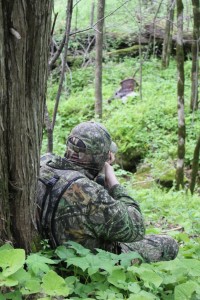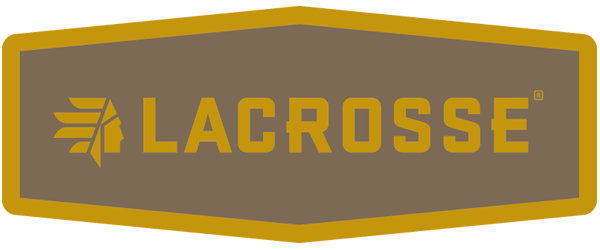 I was recently working a Mossy Oak partnership retail promotion at Bass Pro shops helping hunters of all skill levels and ages get ready for turkey season. I can’t tell you how many times I was asked “how do I decide when to call or what call to use?” my answer is always the same-time will teach you. Of course they don’t like that one so they almost always follow closely with the ever popular “do you know of any great places for me to hunt”. I don’t know why people act so shocked when I say “of course I do!!! I’m trying to get permission to hunt there too!!” After the shocked look goes away I try my best to help to re-assure them the best I can that there is no answer that works every time, and we settle into a conversation that will hopefully help solve some of the issues they are having.
I was recently working a Mossy Oak partnership retail promotion at Bass Pro shops helping hunters of all skill levels and ages get ready for turkey season. I can’t tell you how many times I was asked “how do I decide when to call or what call to use?” my answer is always the same-time will teach you. Of course they don’t like that one so they almost always follow closely with the ever popular “do you know of any great places for me to hunt”. I don’t know why people act so shocked when I say “of course I do!!! I’m trying to get permission to hunt there too!!” After the shocked look goes away I try my best to help to re-assure them the best I can that there is no answer that works every time, and we settle into a conversation that will hopefully help solve some of the issues they are having.
Let’s look at the first question a little more in depth; when do you call and how much if at all, my answer is time will tell and teach you. The more time you spend in the turkey woods you will learn some of the answers, most of which will be the hard way. I would venture to say that more turkeys have been saved than harvested by hunters calling. The simple fact is that most hunters call way- way too often and way to loud is an understatement. Unless you are hunting fall flock turkeys which would require assembly calls for prolonged times to entice hens in, the simple rule should be listening ten times more than you call. To make it easier, that means less than 6 minutes of calling in an hour!!
Most hunters I know become entranced with hearing themselves call, and hearing a response; whether hens or toms. So they continue to call, and the turkeys eventually quit responding and you never see them. Why??? Because turkeys by nature rarely call in one place for long periods of time. Turkeys are nervous animals that stay alive by moving, feeding and more often than not making soft clucks and purrs, rarely yelping at the top of their lungs for long periods of time. Problem is that every once in a while a dumb jake or 2 year old will stumble in and that hunter thinks they now have the secret to turkey hunting…calling-a lot.
 If you have the chance to hunt with a veteran hunter that has taken more than their share of old toms, you’ll find they know far more about turkeys and when and where to set up than they ever do calling. Of course calling is part of the allure of spring turkey hunting, but it needs to come at the right time and at the right volume. Each turkey is unique in attitude and personality, but here are a few basics to calling.
If you have the chance to hunt with a veteran hunter that has taken more than their share of old toms, you’ll find they know far more about turkeys and when and where to set up than they ever do calling. Of course calling is part of the allure of spring turkey hunting, but it needs to come at the right time and at the right volume. Each turkey is unique in attitude and personality, but here are a few basics to calling.
Early morning first light calling is the most exciting time of the day for me. The thought of enticing a tom off the roost into shooting range is a turkey hunters dream. This is the perfect time for soft very low volume tree yelps. These should be audible to a hunting buddy no further than 10-20 yards away at most. When turkeys are first waking up they don’t bust out with loud calls, they ease into it. If you get a turkey to respond in a gobble, you’re in the game. Wait a few minutes and do another soft series just like the first. If he answers again he knows your there, sit tight and shut up!! Listen, and then listen some more, not for gobbles, because in nature that gobbler is wanting you, the hen, to come to him. You need to turn the tables and bring him to you instead against natures instinctive rules.
 What you are listening for is other hens and woods sounds. If you hear other hens, try to pinpoint where they are. If you are between the hens and the tom, great! things might work in your favor. This is the perfect time to float your best medium volume yelp you have toward that tom. The goal is to be the closest hen to that tom and keep his interest just enough that he will come your way off the roost. If he gobbles at the first few yelps or the first series of yelps stop calling! He knows your there. Do as little as you have to with very soft calls to keep him excited and interested, then do a short yelp and fly down cackle. Don’t be afraid to make some noise by scratching leaves and hit some branches around while you do your fly down. Then a few short yelps and that’s it. Nothing more than a cluck or purr to keep him involved.
What you are listening for is other hens and woods sounds. If you hear other hens, try to pinpoint where they are. If you are between the hens and the tom, great! things might work in your favor. This is the perfect time to float your best medium volume yelp you have toward that tom. The goal is to be the closest hen to that tom and keep his interest just enough that he will come your way off the roost. If he gobbles at the first few yelps or the first series of yelps stop calling! He knows your there. Do as little as you have to with very soft calls to keep him excited and interested, then do a short yelp and fly down cackle. Don’t be afraid to make some noise by scratching leaves and hit some branches around while you do your fly down. Then a few short yelps and that’s it. Nothing more than a cluck or purr to keep him involved.
If those hens are closer to the tom than you are, then you need to step up your calling to mimic the hens that you hear, and out call them. If they yelp you yelp, if they cackle you cackle, at this point you have a smaller chance to win his affection because you are farther away, so you need to pay very close attention to what you hear. I’m not telling you to give up, I’m saying listen and learn what happens to each sequence so you can be better equipped to handle the same situation next time you’re in it.
 If you hear birds flying down and you haven’t yet done a fly down, you need to ASAP. Don’t ever- ever move after you hear a fly down. Even if you don’t hear any other gobbles, that tom may be sneaking in as you may have won the battle. If you hear him fading further and further away as he gobbles, I can assure you he is being taken away from the competition by the other hens you heard. Now is the time you need to know your turkey’s patterns and know where they go after roost, swing around and get set up. No need to call, just wait, they will be there if you have scouted and know their daily patterns. If not, welcome to the world of turkey hunting.
If you hear birds flying down and you haven’t yet done a fly down, you need to ASAP. Don’t ever- ever move after you hear a fly down. Even if you don’t hear any other gobbles, that tom may be sneaking in as you may have won the battle. If you hear him fading further and further away as he gobbles, I can assure you he is being taken away from the competition by the other hens you heard. Now is the time you need to know your turkey’s patterns and know where they go after roost, swing around and get set up. No need to call, just wait, they will be there if you have scouted and know their daily patterns. If not, welcome to the world of turkey hunting.
Stay tuned for more next time, what do you do next, once the birds are on the ground?















